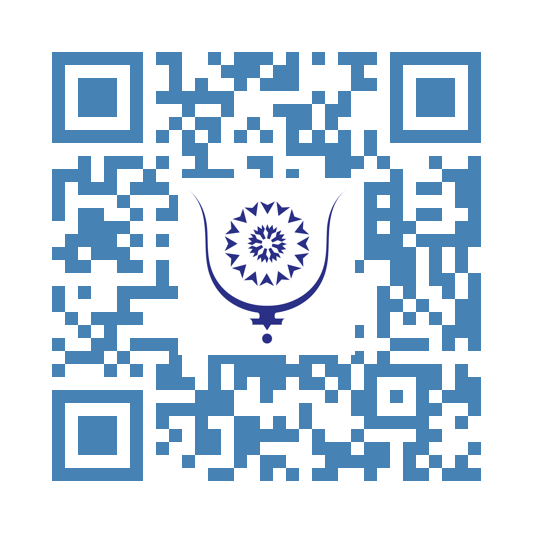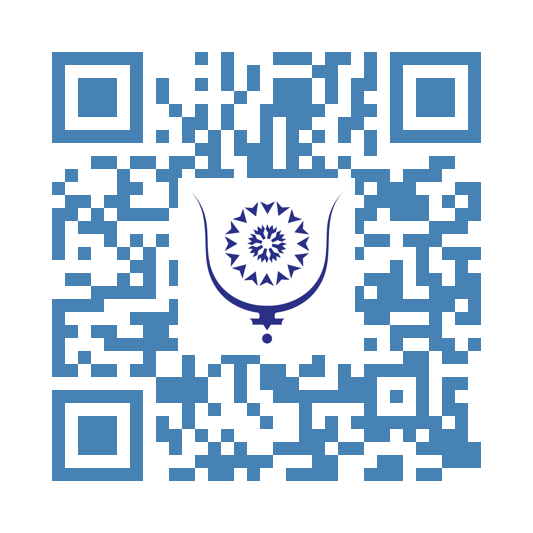Towards a New Era: The CAA Advocates for Fairness and Representativeness in World Athletics
101
At its latest congress held on July 14, 2025, in Abeokuta, Nigeria, the Confederation of African Athletics (CAA) adopted a resolution that could shake up the governance structure of global athletics. At a time when the debate around modernity and representativeness in international sports institutions is intensifying, the CAA proposes major reforms for the organization World Athletics (WA).
**At the heart of the reform: towards fairer governance**
In light of recent developments in global sport and the imperative to ensure transparency and efficiency, the CAA believes it is time to revise the statutes of World Athletics, the global governing body for athletics. The primary goal is to strengthen continental representativeness within the WA Council.
This reform necessarily hinges on key points in the resolution, notably fair representation by continent. The CAA suggests the establishment of a fixed quota of representatives for each continent within the Council. Such a measure would give each region an effective voice, limiting the overrepresentation of continents already firmly entrenched in international decision-making bodies. The CAA also proposes that members of the World Athletics Council be elected by the continental associations themselves, rather than by the global general assembly. According to the CAA, each continental association should directly elect its own representatives. The only exception in the proposed reform concerns the presidency: the position of World Athletics President would remain subject to the traditional election by the WA General Assembly, thereby preserving a form of institutional unity.
The resolution goes further, proposing that for all World Athletics commissions and working groups, the appointment of members should also fall under the authority of continental associations—according to quotas predetermined by WA regulations. This approach aims to ensure genuine diversity in the technical and strategic circles of global athletics.
This represents a new impetus for international sports democracy. The CAA’s initiative aligns with a worldwide movement demanding greater democracy, transparency, and balance in the governance of major sports federations. Several observers consider that such a reform, if supported by other continental associations, could serve as a model for other sports and contribute to a balanced, representative, and inclusive international sports world.
However, the proposal will face multiple challenges in its implementation. Despite its ambitions, the resolution must overcome several hurdles. Obviously, consensus must be reached with the other continental associations. It will also require negotiation with the World Athletics Council, which may fear a loss of influence for certain continents. Finally, the regulatory texts must be adopted within a timetable compatible with the desired institutional evolution.
Carried by the spirit of Abeokuta, the CAA’s proposal could well usher in a new era for athletics. It reaffirms the legitimacy of emerging continents and raises the fundamental question of fairness in international sport. Time will tell if this reform ambition will resonate globally and lead to a profound transformation in the governance of World Athletics.
Share:
Towards a New Era: The CAA Advocates for Fairness and Representativeness in World Athletics
copy:
https://bluwr.com/p/294911345
Moroccan Women’s Football: When Hope Hits the Glass Ceiling
148
For the second consecutive time, the Moroccan women's national football team has been defeated in the final of the African Women's Cup of Nations, despite both tournaments being hosted in Morocco. The second loss seems hard to accept, reigniting deep frustration among fans and sparking heated debates across the country. This defeat, this time against Nigeria following a previous loss to South Africa, highlights complex issues far beyond the playing field.
The start of the final was quite fantastic. The Moroccan national team, displaying a dazzling and effective style of play, found themselves leading 2-0 at halftime against a Nigerian side appearing lost on the pitch, as the Moroccans were skillful and disciplined. Unfortunately, they were caught up later.
The popular enthusiasm generated by the journey of the Atlas Lionesses contrasts sharply with the bitterness of the final defeat. For many observers, this failure is not simply bad luck. Several voices, expert and anonymous alike, offer various explanations that fuel the debate.
The coach’s tactical choices are being questioned. Many believe that the second half against Nigeria revealed a lack of inspiration and responsiveness, hence a lack of competence, notably through late substitutions that failed to dynamically revive the team as the game seemed to slip away from Morocco. Although not solely responsible for the outcome, these technical decisions sparked a wave of criticism regarding bench management and adaptability to the match’s developments.
Among various points raised is the average age of the players, arguably too high at 31. At this age, unless blessed with exceptional physical, technical, and mental qualities, it is difficult to sustain 90 minutes, especially after enduring 120 minutes and penalty shootouts just days earlier. There is also mention of sentimental considerations in the selection of certain players, picked to please others. Further criticism targets the deployment of some players who were not placed in their usual positions. In short, many viewpoints tend to converge on the technical staff’s responsibility.
The issue of physical conditioning is also raised. Several analysts and fans point to insufficient physical preparation, reflected in a drop in intensity and sharpness during key moments of the match. Facing opponents known for their athletic power and their ability to maintain high levels of demand throughout 90 minutes, this deficit proved fatal. In truth, physical conditioning is a long-term process that cannot be meaningfully developed at the national team level due to lack of time. It primarily occurs at clubs that have the players throughout the season. At the national team level, the fitness coach mostly focuses on maintenance.
However, the analysis does not stop at strictly sporting aspects. Throughout the tournament, the feeling of having been wronged by the refereeing was palpable. Some even spoke of "theft" or systemic injustice against Morocco. The controversial penalty, awarded then ultimately canceled for obscure reasons, only confirmed this sentiment. Was a certain number of Nigerian titles guaranteed at all costs?
Social media, acting as a true echo chamber for popular emotions, immediately ignited after the final. Criticism multiplied against the federation and its president. Some internet users accused him of failing to assert Morocco’s authority in its own stadium, while others pointed to management detached from supporters’ expectations, who had been buoyed by recent progress in national women’s football.
A polarization of the debate has since emerged. On one side, a segment of the public, legitimately disappointed, demands accountability and calls for radical changes in team management. They remind that it was the same coach who led the team to victories before losing the Olympic qualification to Zambia on home soil. On the other side, defenders of the current leadership emphasize the progress made, insist on the need for stability, and caution against hasty judgments, citing the impressive record of the Spanish coach. They remind critics that Nigeria holds 10 African titles and has reached a World Cup quarter-final, while Morocco had little clout before.
While the Royal Moroccan Football Federation has succeeded in putting women's football on the continental map—something that barely existed not long ago—the path from dream to achievement remains fraught with obstacles.
It now appears urgent to draw conclusions, both technically and structurally, especially since the tournament will soon be held again in Morocco and, under the new format, will serve as a qualifier for the 2027 World Cup in Brazil. Will the same staff be kept despite everything, with a squad whose average age does not allow for enduring the seven matches of the African Cup and a deep run in the World Cup?
Although premature, it might be wise to quickly assess the strategy of a women’s football program fully funded by the federation to the tune of 1.2 million per team—a very substantial amount compared to other teams in other sports. Are clubs doing their job properly to avoid wasting money for a near-zero return at the national team level?
Priority should be given to improving scouting and physical preparation, expanding the pool of professional players, and raising the standards in Botola (the Moroccan league). At the same time, efforts in communication and dialogue with supporters seem essential to restore trust, ease tensions, and encourage collective mobilization around upcoming challenges.
The reading of His Majesty the King’s message, may God assist him, to the team must be twofold. Yes, the team and staff deserve congratulations for the journey, but the Royal message is also a warning regarding future expectations. And the future includes other football competitions the country is preparing to host.
Moroccan women’s football is at a turning point. Between the merit of past achievements and the need to reach a new level, the challenge remains immense. But sports history is made as much of setbacks as resilience. The key may lie in the ability of those behind this project to transform current frustration into a driving force for the future, so that the hope raised by these bittersweet finals finally turns into accomplished victory.
Share:
Moroccan Women’s Football: When Hope Hits the Glass Ceiling
copy:
https://bluwr.com/p/293839700
When Christopher Nolan Illuminates Dakhla, Dakhla Enhances His Film...
154
Christopher Nolan has just finished shooting part of his upcoming film, *The Odyssey*, in Dakhla, a gem of southern Morocco. It is a cinematic adaptation of the epic of Ulysses. Among the chosen shooting locations is the spectacular White Dune, located about thirty kilometers from Dakhla — an exceptional natural setting blending white sand and turquoise lagoon — which greatly contributed to the film’s visual richness.
This Hollywood blockbuster features a prestigious cast: Matt Damon plays Ulysses, alongside Zendaya, Charlize Theron, Tom Holland, Robert Pattinson, Anne Hathaway, and Lupita Nyong’o. The worldwide release of the film is scheduled for July 15, 2026. Before setting up cameras in Dakhla, Nolan’s team had filmed sequences in Ouarzazate, notably at the Ksar Aït Ben Haddou, as well as in Italy. Originally, Nolan considered locations such as Bermuda or Australia for some maritime scenes, but ultimately chose southern Morocco, recognized for the diversity and quality of its natural landscapes.
The shoot in Dakhla is widely seen as a great opportunity for the city and for Morocco, boosting their visibility on the international film scene while promoting the local film industry.
But who is Christopher Nolan in the world of cinema? In 2024, he won two major Oscars: Best Director and Best Picture for *Oppenheimer* (2023). He also received an honorary César for his entire career, the BAFTA for Best Director, as well as several other prestigious awards such as the Golden Globes and the Directors Guild of America Awards, all for *Oppenheimer*. This brief overview proves that Nolan is no ordinary figure in the film industry — he is one of the greatest filmmakers in the world.
However, this production sparked some controversy and unfounded criticism lacking rigor. The media outlet Middle East Eye dedicated an article condemning the shooting in Dakhla, adopting a selective and victimizing tone, relying on a rhetoric of “decolonization” and supposed “indigenous voices.” This critique, riddled with historical inaccuracies and an obvious bias, reveals either a deep ignorance of the history and physical and human geography of these regions or a deliberate will to distort reality for some ulterior motive...
The filming took place in a peaceful and stable city, equipped with modern infrastructure, where Moroccan sovereignty is indisputable. It is probably this stability that troubles some, especially because it highlights the Kingdom’s successes in this region of its territory, contrasting sharply with the difficult situation caused by the Polisario Front, which, under its tutelage, has brought nothing but despair and a lack of dignity to populations held hostage in the Tindouf camps for nearly 50 years.
While Middle East Eye accuses Morocco of “cultural normalization,” the article omits mentioning that Algeria exerts a true occupation over the Sahrawis held captive in the camps of shame, where they are a minority compared to the Sahrawis in Morocco, and have neither freedom of movement, nationality, nor an independent press. They don’t even benefit from refugee status, with the United Nations prevented by the host country from registering them. The real question remains: who is the true colonizer in this context?
The Sahrawis, who are the majority and live in Moroccan Sahara, enjoy a significantly higher standard of living than the populations in the Tindouf camps — or even compared to those in the host country overall. They participate in democratic processes, govern their communes, towns, and regions, engage in the political life of the Kingdom, hold positions of responsibility at all levels of government, create businesses, run associations, travel freely, and produce cultural works enriching their country. Their children attend quality schools and universities. They receive care in top-tier hospitals and do not need a media outlet to speak for them.
In reality, this article has nothing to do with serious journalism but rather reflects nostalgia for reversed colonialism and an outdated neo-Orientalist vision. It is an ideological staging orchestrated by a group of European activists using the Sahrawis as instruments of propaganda that has been seen before, and that is, frankly, absurd. The goal here is neither peace nor real autonomy, but the perpetuation of artificial resentment in service of their chimera of an independent Sahrawi state — a state that will never exist.
Meanwhile, the *The Odyssey* shooting team, satisfied with the quality of reception, assistance, and support from the Moroccan authorities and the work accomplished, has indeed returned to the USA aboard a Royal Air Maroc plane chartered for the occasion.
Let us hope Christopher Nolan will not take long before returning with another project and that the beauty of the images in his film will encourage other major filmmakers worldwide to come to Dakhla to elevate their upcoming works.
Share:
When Christopher Nolan Illuminates Dakhla, Dakhla Enhances His Film...
copy:
https://bluwr.com/p/293826670





